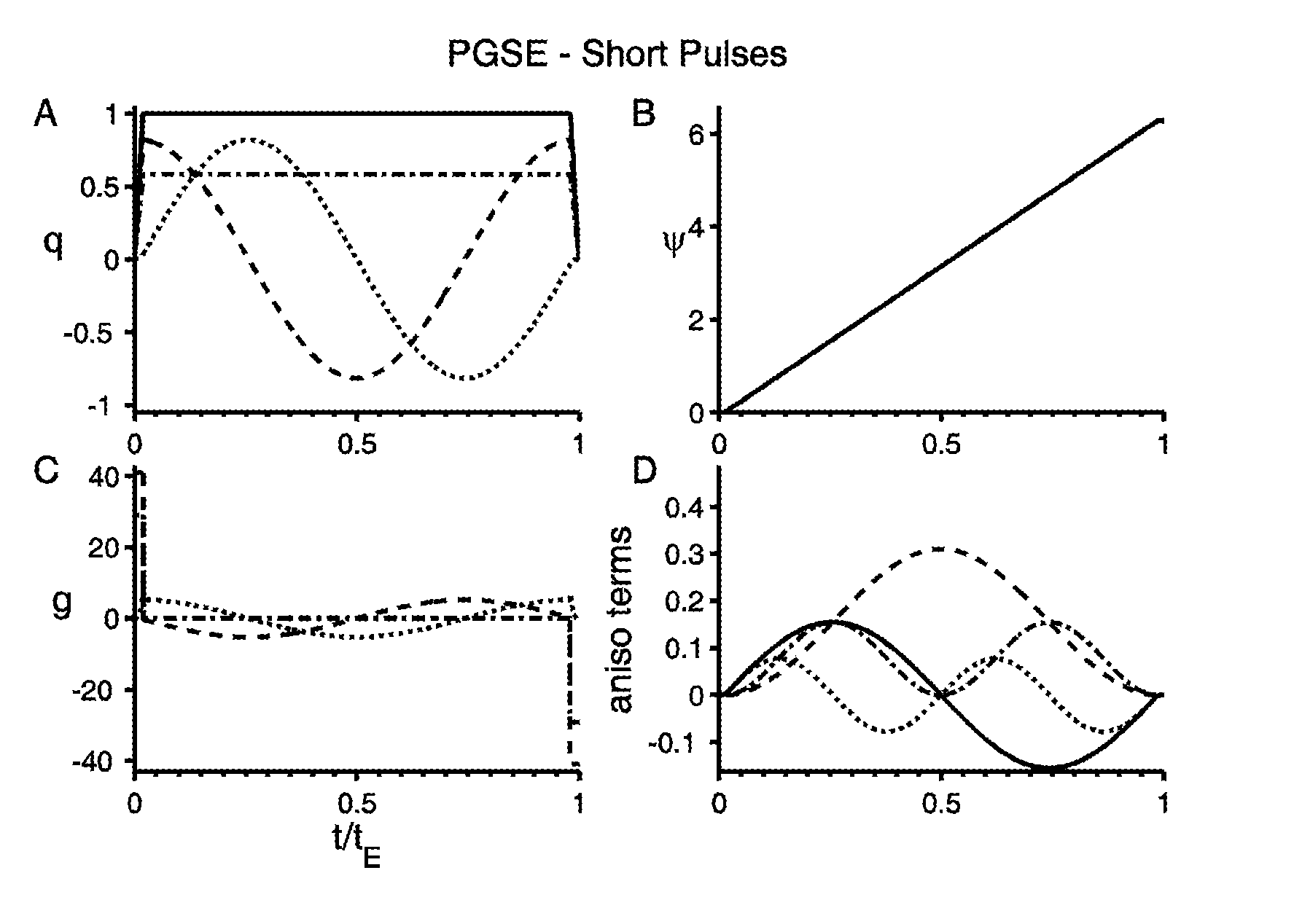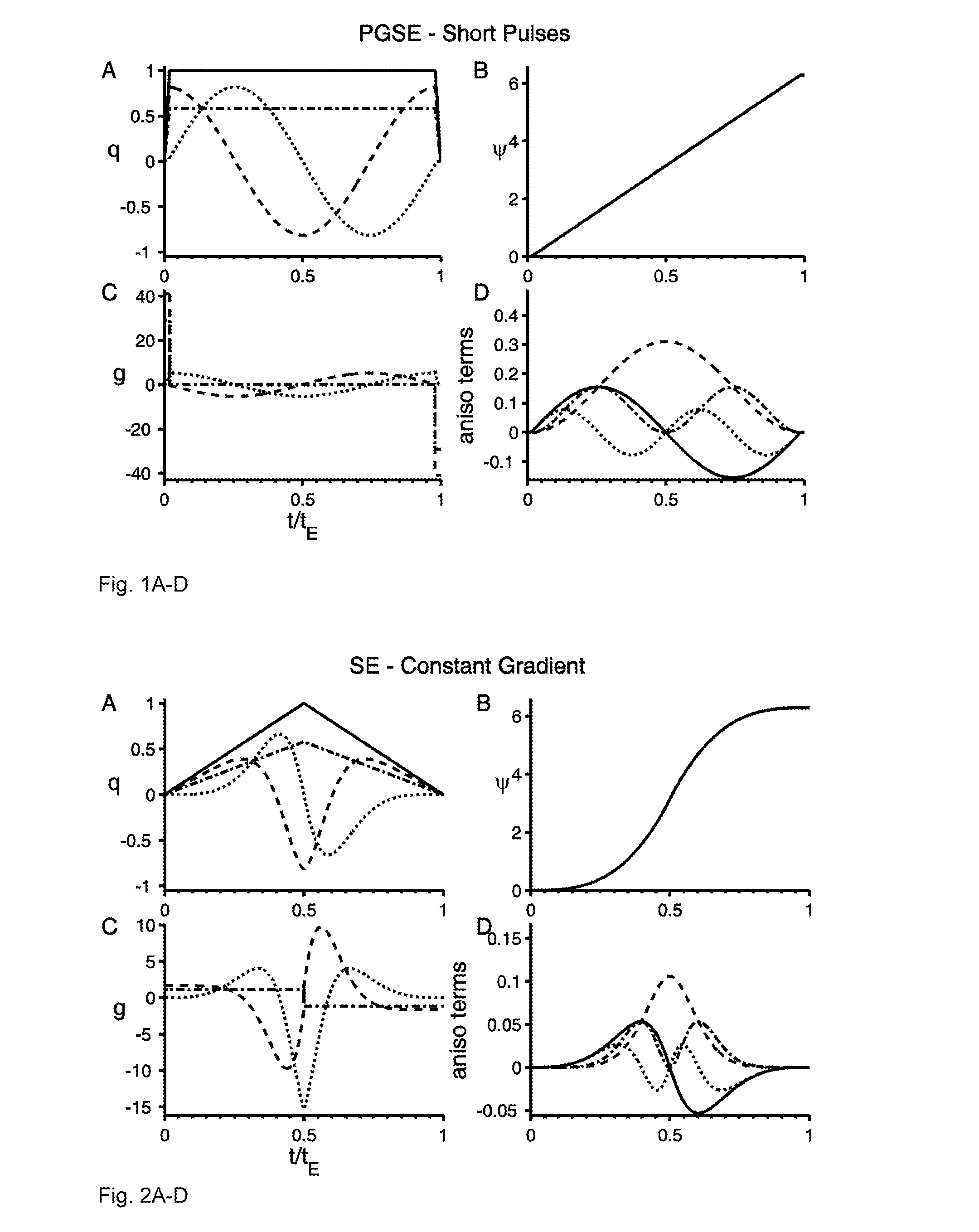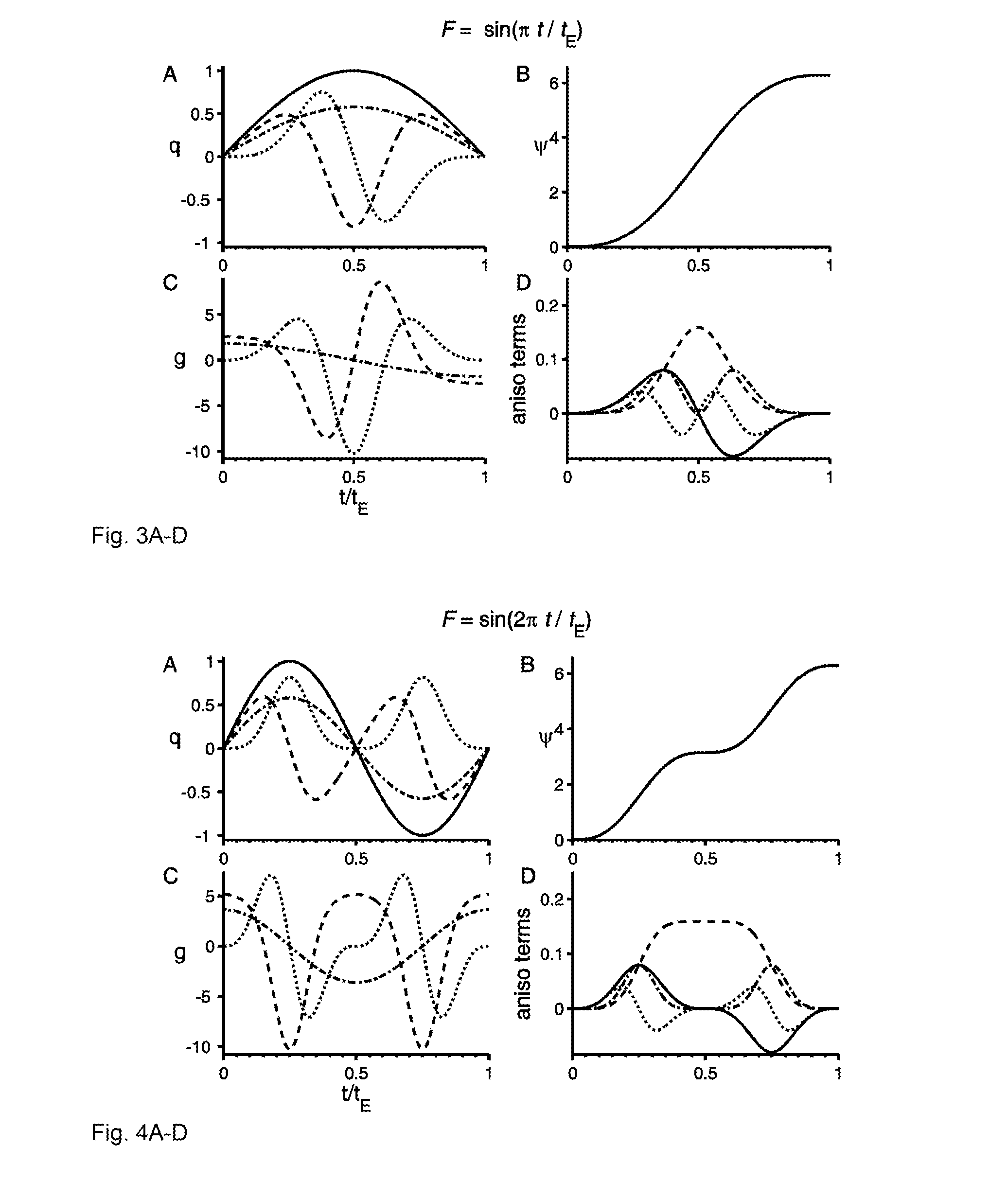Pulse sequence method for MRI
a pulse sequence and magnetic resonance technology, applied in the field of magnetic resonance (mr) and/or mr imaging, can solve the problems of unfavorable, unfavorable, and long echo time required by the above schemes to achieve isotropic diffusion weighting,
- Summary
- Abstract
- Description
- Claims
- Application Information
AI Technical Summary
Benefits of technology
Problems solved by technology
Method used
Image
Examples
Embodiment Construction
[0015]Assuming that spin diffusion in a microscopically anisotropic system can locally be considered a Gaussian process and therefore fully described by the diffusion tensor D(r), the evolution of the complex transverse magnetization m(r,t) during a diffusion encoding experiment is given by the Bloch-Torrey equation. Note that the Bloch-Torrey equation applies for arbitrary diffusion encoding schemes, e.g. pulse gradient spin-echo (PGSE), pulse gradient stimulated echo (PGSTE) and other modulated gradient spin-echo (MGSE) schemes. Assuming uniform spin density and neglecting relaxation, the magnetization evolution is given by
∂m(r,t)∂t=-iγg(t)·rm(r,t)+▽·[D(r)·▽m(r,t)],(1)
where γ is the gyromagnetic ratio and g(t) is the time dependent effective magnetic field gradient vector. The NMR signal is proportional to the macroscopic transverse magnetization
M(t)=1V∫Vm(r,t)r.(2)
[0016]If during the experiment each spin is confined to a domain characterized by a unique diffusion tensor D, the ma...
PUM
 Login to View More
Login to View More Abstract
Description
Claims
Application Information
 Login to View More
Login to View More - R&D
- Intellectual Property
- Life Sciences
- Materials
- Tech Scout
- Unparalleled Data Quality
- Higher Quality Content
- 60% Fewer Hallucinations
Browse by: Latest US Patents, China's latest patents, Technical Efficacy Thesaurus, Application Domain, Technology Topic, Popular Technical Reports.
© 2025 PatSnap. All rights reserved.Legal|Privacy policy|Modern Slavery Act Transparency Statement|Sitemap|About US| Contact US: help@patsnap.com



